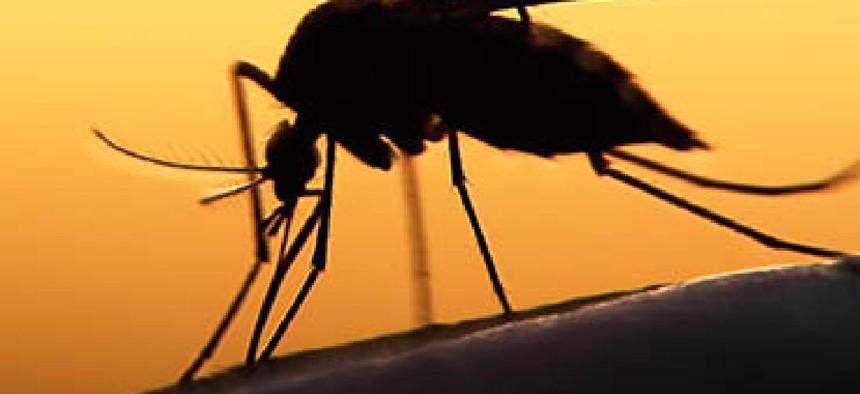DARPA seeks model to forecast fast-moving virus

DARPA issued a $150,000 challenge to build a model that accurately charts the path of the chikungunya virus through the Americas.

Chikungunya is a mosquito-borne virus currently threatening the Caribbean. Cases have also been reported in Florida.
WHAT: A $150,000 prize for the most accurate model charting the spread of chikungunya.
WHY: Chikungunya, a mosquito-borne virus plaguing the Caribbean, isn't deadly. But it is spreading fast, and there is no vaccine or treatment. Late last year, the virus began showing up in the western hemisphere for the first time, taking hold in Haiti, Dominican Republic, Jamaica and other island nations. More recently, cases have been reported in Central and South America, as well as in Florida.
DARPA issued a $150,000 challenge to build a model that accurately charts the path of the chikungunya virus through the Americas. Participants will submit a description of their model and data sources by Sept. 1 of this year, along with an initial forecast. The forecast will be augmented by monthly submissions updating predictions for the spread of the virus, with a final report including a complete methodology due Feb. 1, 2015. Progress on the model will be tracked via an online leaderboard.
The hope is that a successful forecasting model will help predict the spread of future outbreaks not just of chikungunya, but other diseases as well. The current Ebola outbreak in West Africa points to the urgent need for information on the transmission of infectious disease.
A successful model will have to take into account weather and temperature patterns, mosquito population, insect eradication efforts, human demographics and other factors. DARPA hopes cross-disciplinary teams including mathematicians, epidemiologists, computer scientists, entomologists, meteorologists and other experts will come together to work on the challenge.
"The science of forecasting is a work in progress. It's akin to trying to solve a jigsaw puzzle with some of the pieces missing and a vague sketch of what the finished image should look like," DARPA program manager Col. Matthew Hepburn said in a statement.
NEXT STORY: Washington Technology announces 2014 Fast 50






